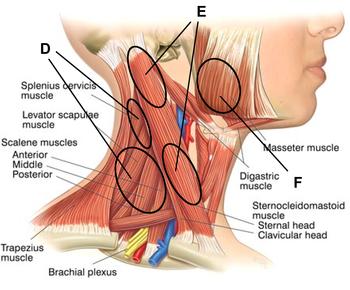Is pain good or bad?

Have you ever given thought to the meaning behind the statement: No pain, no gain?
A great many people take this statement literally, and unfortunately, the end result can be injury. It is of utmost importance that we listen to what our bodies tell us. In evolutionary terms the ability to feel pain is a necessity, people who congenitally cannot feel pain do not live as long as people who can, simple as that. There is in fact ‘good pain’ and ‘bad pain’.
The most common type of good pain is clinically referred to as delayed onset muscle soreness. This occurs as the result of challenging a muscle or muscle group with exercise. One to two days after exercising, soreness will be felt in the belly of the muscle. It can be quite tender to touch and tends to be spread out over a large area. With this type of soreness the muscles actually remodel and become stronger and more efficient.
 ‘Bad pain’ comes in many forms. The most common type of bad pain that we see in the clinic involves joint pain. When pain occurs in a joint (such as in the spinal joints of the neck or back), it is the body trying to tell us that something is not right. Do not try to get through joint pain while going through your everyday activities at work or home. If it occurs regularly you should have it checked out by a health professional. If your pain is sudden and sharp, this is usually a sign of a significant pain stimulus so it is important to have it assessed by a health professional.
‘Bad pain’ comes in many forms. The most common type of bad pain that we see in the clinic involves joint pain. When pain occurs in a joint (such as in the spinal joints of the neck or back), it is the body trying to tell us that something is not right. Do not try to get through joint pain while going through your everyday activities at work or home. If it occurs regularly you should have it checked out by a health professional. If your pain is sudden and sharp, this is usually a sign of a significant pain stimulus so it is important to have it assessed by a health professional.
The most common form of pain is what’s called nociceptive pain, which is typically the result of a physical injury. When you stub your toe, burn yourself, or experience a cut, you’re activating the nociceptive pain receptors in the skin, which then send a message back to the spinal cord and up to the brain where commonly a withdrawal response to the painful stimulus is activated.

Another primary classification is neuropathic pain, which is caused by damage to any part of the nervous system. It’s this sort of injury that results in sensations like tingling, electrical shocks, or pins and needles.
Another type of pain that should be brought to the attention of a health care professional is radicular pain, or pain that shoots from one area to another. Pain that shoots down your arm or leg may be spinal in origin. Sciatica is an example of this. Pressure or trauma to the nerve roots as they exit the spinal column in the lower back tends to be manifested in this way.
Chiropractors specialise in assessing, diagnosing and managing conditions of the spine. We are highly trained in finding the cause of pain in the spine. If you are experiencing any sort of pain that you believe may be coming from the spine, in the neck or back, then Chiropractic care has been proven to help reduce or eliminate the painful symptoms that are commonly experienced.
Mike Noone & Mike Gillingham

